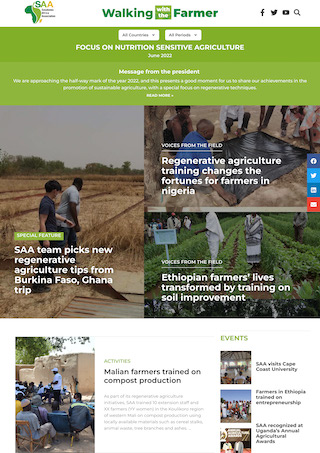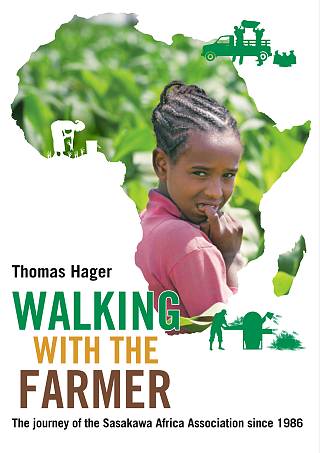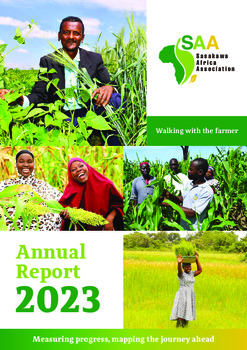【Activity】Powering Rural Transformation: How Public–Private–Community Partnerships Are Redefining Agriculture in Uganda

In the remote corners of Uganda’s agricultural landscape, a silent revolution is taking root, one that is reshaping lives, restoring hope, and redefining the future of farming. At the center of this transformation is the Sasakawa Africa Association (SAA), whose innovative Public–Private–Community Partnership (PPCP) model is demonstrating that inclusive, coordinated action can unlock sustainable development for smallholder farmers.
This dynamic model aligns the comparative strengths of public institutions, private sector actors, and rural communities to overcome systemic challenges, including low productivity, fragmented markets, youth unemployment, and climate vulnerability. It is a holistic approach that is turning subsistence farmers into agribusiness entrepreneurs and rural villages into centers of opportunity.
A Model Built on Collaboration
The PPCP approach thrives on synergy. Local governments are playing a critical role in laying the foundation by facilitating cooperative registration, deploying extension services, and investing in enabling infrastructure like aggregation centers and irrigation schemes. Meanwhile, private sector players are stepping in with innovations that matter, from mechanized tools and certified seeds to digital platforms and structured markets.
Yet, it is the communities themselves, organized under SAA-supported One-Stop Center Associations (OSCAs), that are breathing life into the model. These grassroots institutions are not only mobilizing local production and aggregation but also driving adoption of climate-smart, nutrition-sensitive agricultural practices tailored to their contexts.
SAA: The Engine Behind the Transformation
SAA serves as the catalyst that binds this triad together. Through continuous capacity building, mentorship, and technical backstopping, SAA ensures that each partner plays a meaningful role in the shared journey toward agricultural transformation. In Kibuku, Kamuli, and Karamoja, SAA-trained youth champions are delivering last-mile mechanization services using tools like jab planters and motorized weeders. These young entrepreneurs have emerged as trusted service providers, bundling input sales, mechanization, and digital extension while linking farmers to financial services like Vision Fund.
“I used to depend entirely on my parents for support,” says Elinest Mubale, a 30-year-old mechanization agent from Kamuli. “But through SAA’s training and the PPCP model, I now earn a living offering ploughing and planting services. I’ve even saved enough to buy my own motorbike and rent land for farming.”
Women-led cooperatives are also thriving under this model. In the West Nile and Rwenzori regions, groups previously excluded from commercial markets are now producing quality cocoa, coffee, and sesame for export buyers, while exploring new frontiers in organic certification and carbon trading.
 A training session on the use of the jab planter underway at Bala Women and Youth Cooperative.
A training session on the use of the jab planter underway at Bala Women and Youth Cooperative.Real Results, Real Change
The results are tangible and compelling. Cocoa yields have increased by 200%, coffee yields by 45%, and more than 20,000 households have recorded improved dietary diversity as a result of SAA’s nutrition-sensitive agriculture initiatives. In refugee-hosting areas like Yumbe, refugee-led farming cooperatives supported through PPCP structures are now supplying food to World Food Programme contractors, creating stability and economic opportunity where once there was dependency.
Digital tools introduced through SAA’s partnerships are bringing transparency and traceability to rural value chains, enabling farmers to track their sales and access data-driven advisory services. These innovations are ensuring that even the most remote farmer is no longer invisible in Uganda’s agricultural economy.
A Blueprint for Africa’s Agricultural Future
The PPCP model proves that the future of agriculture lies not in isolated efforts but in cohesive, inclusive systems that recognize and respect the role of each actor. “This partnership model is the bridge that connects farmers to markets, youth to opportunity, and communities to sustainability,” says Mr. Robert Anyang, Country Director, SAA Uganda. “It is about shared responsibility and collective impact.”
With continued investment and collaboration, this model holds potential not only for Uganda but also for the broader continent, where millions of smallholders are still seeking a pathway from poverty to prosperity. As SAA continues to scale its work, one thing is clear: Uganda’s agricultural story is being rewritten, and this time, it’s a story of inclusion, innovation, and inspired transformation.
 Farmers gathered at Apeitolim Farmers Association during a training session facilitated by SAA to enhance their knowledge and skills in modern agricultural practices.
Farmers gathered at Apeitolim Farmers Association during a training session facilitated by SAA to enhance their knowledge and skills in modern agricultural practices.
SAA Publications

E-newsletter
"Walking with the Farmer"
SAA publishes a bimonthly e-newsletter reporting on SAA activities.

SAA history book
"Walking with the Farmer: The journey of the Sasakawa Africa Assoication since 1986"
This book chronicles the history of SAA from its inception to the present.

Annual Report
Annual Report FY2023
Annual Report FY2023 is available here.




